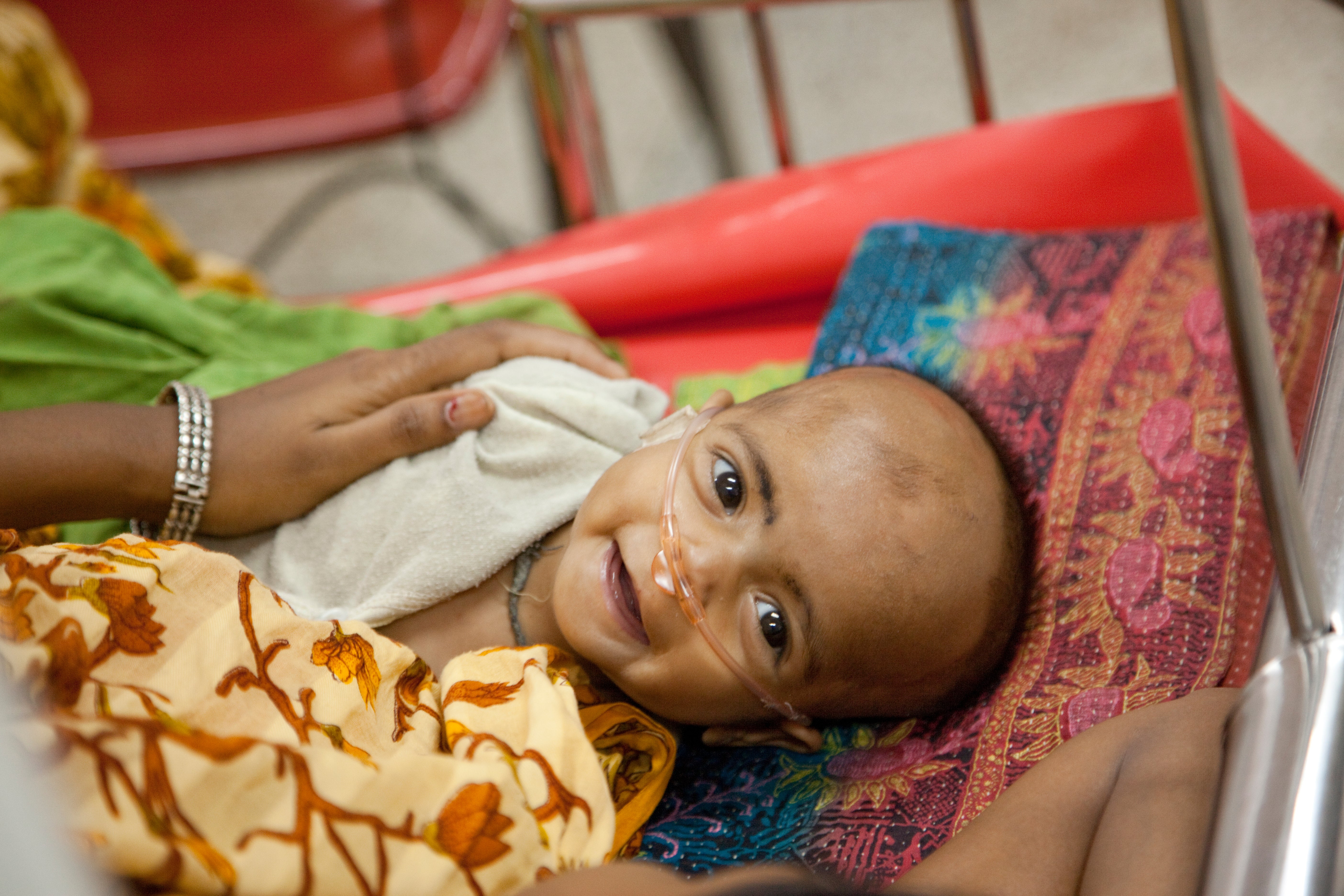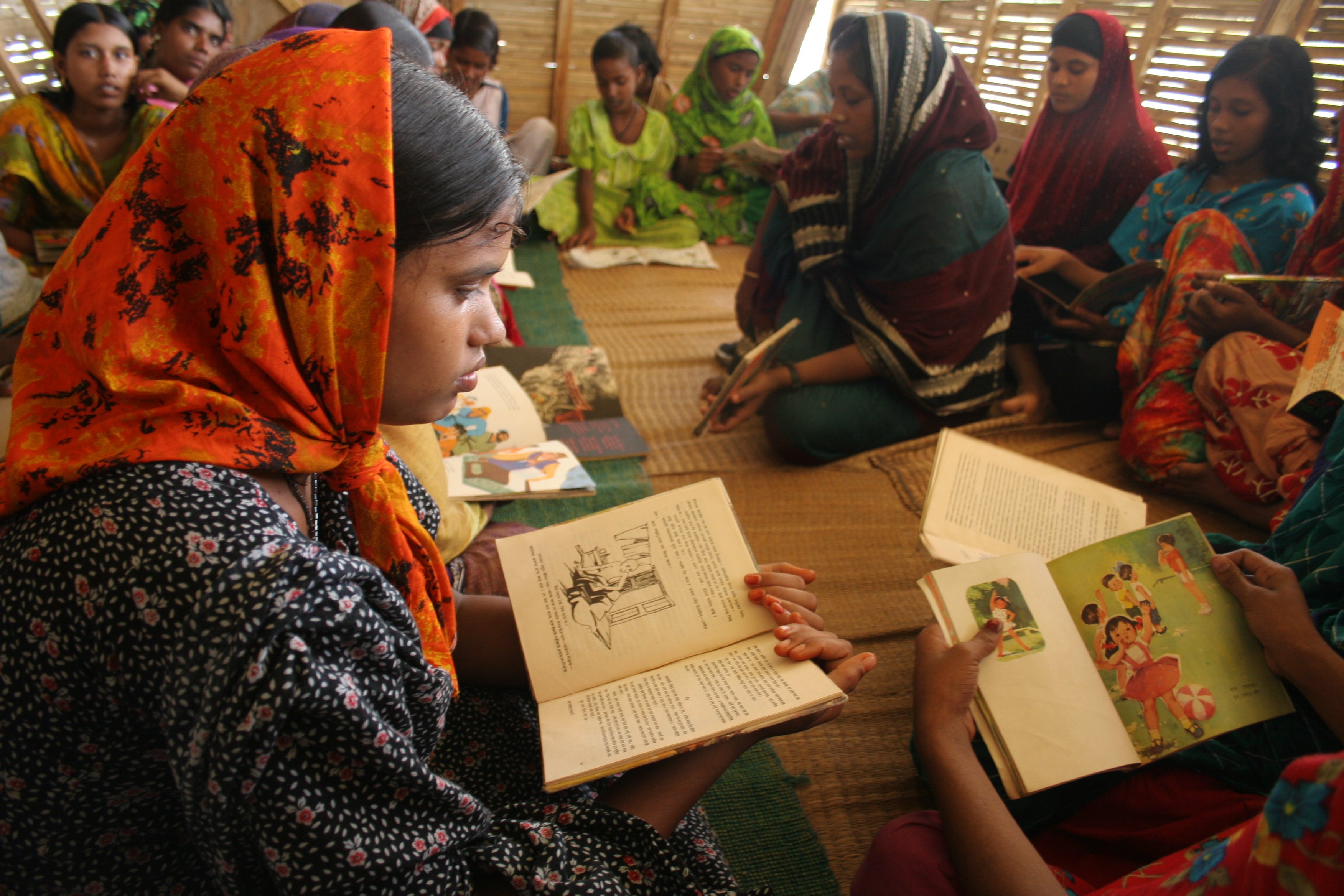NEONATAL AND MATERNAL MORTALITY REDUCTION IN BANGLADESH
By expanding access to family planning, promoting antenatal care, and reducing barriers to facility-based delivery, Bangladesh has emerged as an Exemplar on track to reach SDG targets for both neonatal and maternal mortality.
CONTENTS
Introduction to Bangladesh
Located in South Asia, the nation of Bangladesh won independence in 1971 following its war for liberation. The constitution of Bangladesh contains many elements directed at promoting social justice and human dignity, including a right to public health care. This perspective is still evident in the country’s approach to health policy and programming.
In 2020, Bangladesh had the eighth largest population of any nation in the world at 165 million, despite being only the 94th largest country by geographic size. The population has surged from 103 million in 1990, making Bangladesh one of the most densely populated countries in the world, as highlighted in Figure 1. Of countries with populations greater than 10 million, Bangladesh was the most densely populated at 1,265 people per square kilometer in 2020. The capital of Bangladesh is the city of Dhaka, which is one of the largest metropolitan areas in the world with a population of over 21 million people as of 2020.
Today, Bangladesh is divided into eight administrative divisions that are further separated into 20 regions, 64 districts (zilas), and 495 subdistricts (upazilas). Several of these eight divisions have been added in recent decades, largely in response to the growing populations of existing divisions. Brief descriptions of each are included later in the Context section.
Figure 1: Population Density by Administrative Division of Bangladesh in 2000 and 2020

WorldPop (www.worldpop.org - School of Geography and Environmental Science, University of Southampton; Department of Geography and Geosciences, University of Louisville; Departement de Geographie, Universite de Namur) and Center for International Earth Science Information Network (CIESIN), Columbia University (2018). Global High Resolution Population Denominators Project - Funded by The Bill and Melinda Gates Foundation (OPP1134076). https://dx.doi.org/10.5258/SOTON/WP00675
Bangladesh has one of the fastest growing economies in the world—gross domestic product per capita rose from US$512 to US$1,620 (2015 US dollars) from 1990 to 2020. This growing economy helped reduce the percentage of people living in poverty (i.e., living on less than US$2.15 per person per day) from 41.9% in 1991 to 13.5% in 2016.
Although this economic progress is remarkable, our country selection analysis found that it does not entirely explain Bangladesh’s progress in reducing neonatal and maternal mortality in recent decades. Additional details about Bangladesh are included in the Context section, and the majority of this narrative will highlight key indicators, interventions, policies, and programs that contributed to rapid neonatal and mortality reduction in Bangladesh.

Key Insights
Bangladesh’s reductions in neonatal and maternal mortality were linked to improved women’s empowerment through expanded access to education and family planning, accompanied by innovative health financing schemes and pro-poor policies that specifically targeted vulnerable communities.
Empowered women through education
Bangladesh incentivized women’s education, especially in rural areas, which had downstream positive effects on neonatal and maternal mortality.

In 1994, the government of Bangladesh introduced the Female Secondary School Stipend and Assistance Program, which aimed to increase female secondary school enrollment and delay marriage. This conditional cash-transfer program supports over two million girls annually, and has been linked to delayed marriages as well as increased contraceptive use. Bangladesh continues to introduce new programs to improve access to education for women and marginalized communities, such as the Transforming Secondary Education for Results program starting in 2017. These and other programs ultimately impact maternal and neonatal health outcomes. For example, in our decomposition analysis, improvements in maternal education rates were found to explain 13% of the decline in neonatal mortality rate between 2000 to 2018.
Focused on maternal and neonatal health in SWAp programs
By prioritizing maternal, neonatal, and reproductive health within SWAp programs, Bangladesh was able to make key advances that improved access to essential health services.
Bangladesh’s sector-wide approach (SWAp) program integrated a variety of separate health projects and partners to improve essential health services. Led by the government, four health and population SWAp programs were in place from 1998 to 2022. These programs have enabled key advances in maternal and newborn health, such as the revitalization of community clinics, improvements in supply chain management, strengthening of monitoring and evaluation infrastructure, and promotion of local ownership of the health care system. This approach has been key in mitigating logistical inefficiencies that were more common under the previous vertically structured system.

Scaled up community-based approaches for family planning
Bangladesh pioneered and scaled innovative programming to improve access to family planning, contributing towards declining fertility rates.

An approach of door-to-door family planning consultations through female community health workers was initiated in one rural subdistrict in Bangladesh in the late 1970s, and was rapidly scaled up across the country. Revolutionary at the time, this approach led to lower fertility rates, improved care-seeking behavior, and lower rates of child mortality rates. As a result, Bangladesh’s family planning program is one of the most successful in the world. Fertility decline alone in Bangladesh was found to explain 44% of the MMR reduction and 47% of the NMR reduction through one of our quantitative decomposition approaches. Increased modern contraceptive use was also found to be a key driver of neonatal mortality reduction using another analytical approach, accounting for 41% of the reduction in neonatal mortality rate between 2000 to 2018.
Contextualizing Bangladesh’s Progress in an Integrated Mortality Transition Framework
Between 2000 and 2017, Bangladesh moved from phase I to phase III on the integrated mortality transition framework, demonstrating exemplary progress in improving maternal and neonatal health outcomes.
Bangladesh progressed two phases on the integrated mortality transition framework over a span of approximately two decades. This progress reflects substantial progress in reducing mortality. The integrated mortality transition framework represents a powerful tool for contextualizing the Exemplary progress that Bangladesh has made in recent decades.

Exemplars in Global Health program
The Exemplars in Global Health program aims to learn from countries that have made rapid progress in improving health outcomes and disseminate this evidence to inform health policy and funding decisions. Our aim is to research success stories from low- and middle-income countries and share findings that can be useful for leaders looking to act in comparable contexts.
In selecting Exemplar countries, we review evidence to identify countries that outperformed their peers in vital areas of public health, controlling for factors such as economic growth. In this way, we aim to provide more actionable, policy-relevant insight for stakeholders about how health progress can be made despite resource limitations.
Together with research partners and technical advisers, we conduct quantitative and qualitative analyses to validate our initial assessments and assess factors that contribute to a country’s exemplary performance.
Research in and across Exemplar countries could help ministries, nongovernmental organizations, and multinational bodies better deploy finite resources to address key public health issues in low- and middle-income countries.
By studying proven strategies to prevent disease, malnutrition, and other conditions that burden populations of low- and middle-income countries, we aim to create a list of data-driven narratives that can serve as resources for leaders looking to improve health within their own countries. The following narrative focuses on factors that contributed to rapid reductions in neonatal and maternal mortality in the Exemplar country of Bangladesh.
Neonatal and maternal mortality reduction in Bangladesh

Ask an Expert
Our team and partners are available to answer questions that clarify our research, insights, methodology, and conclusions.
